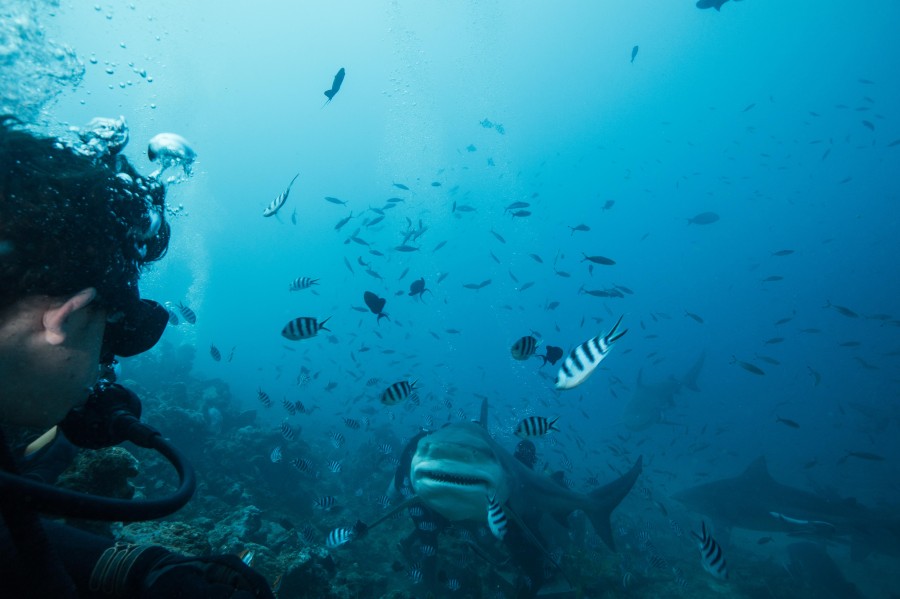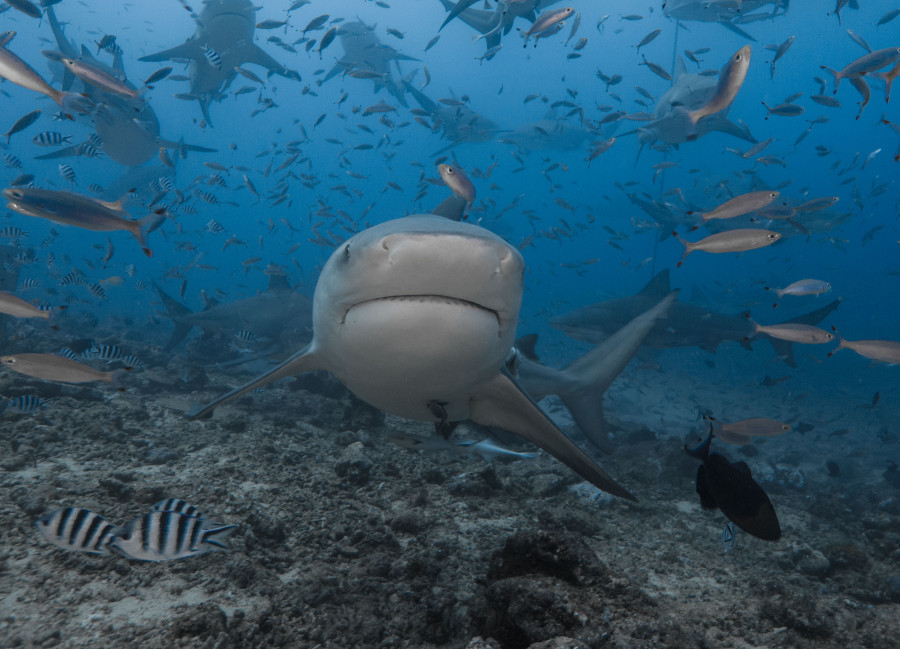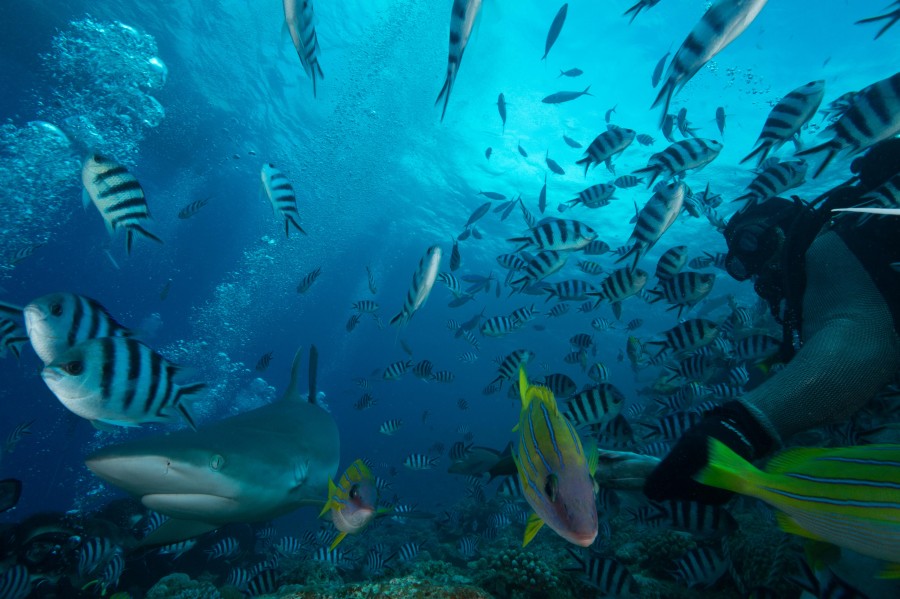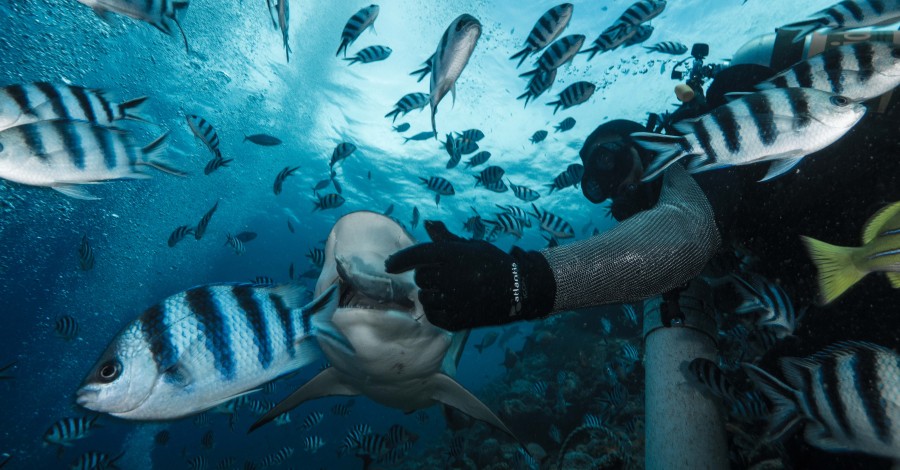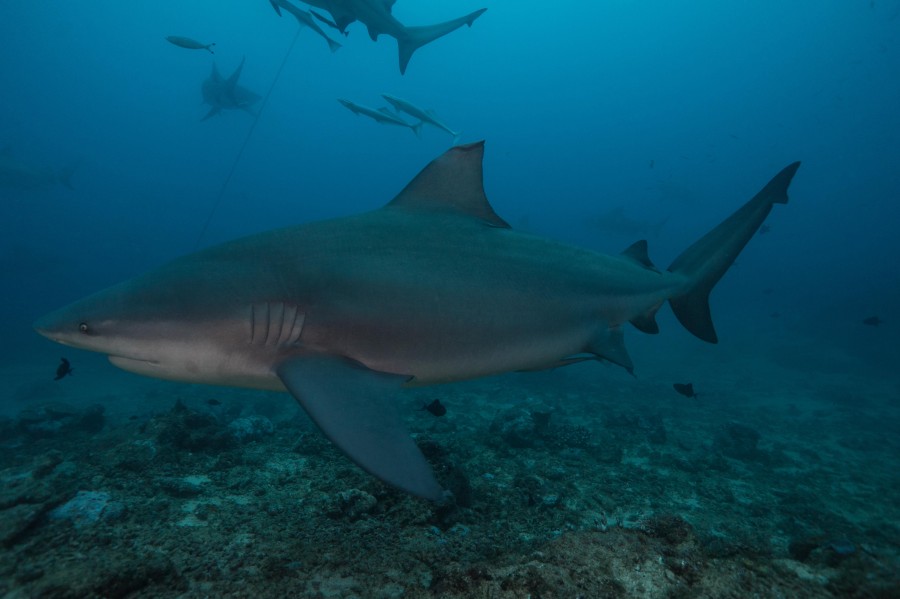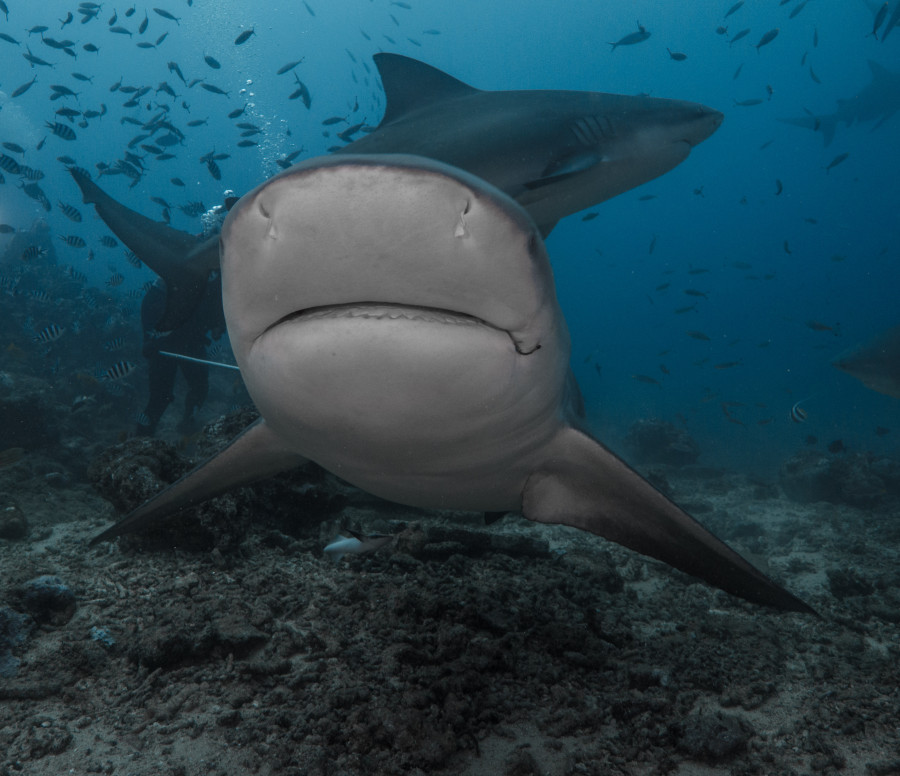What a way to spend my last week in Fiji, diving with impressive bull sharks! Never did I imagine I would be in the water with dozens of these amazing creatures at the same time! But thanks to Beqa Adventure Divers (BAD), I experienced just this. I remember every detail of my first dive, as we descended down to the feeding station 30metres below the surface we were greeted by about 70 bull sharks. At first, they swam calmly but I still felt impressed by their dominance in the water column. As soon as the feeding started, the mood immediately changed. The sharks picked up speed, circling around the feeding station, along with the feeders.
Even though they seemed more active, they were not in any way aggressive towards the divers or feeders. They start to come in and were hand fed by the staff just a few metres in front of the divers (and me!). After some time, the feeders stepped back, as we’re close to our bottom time limit. We moved up to another feeding station at 15metres. Here Manasa, nicknamed ‘Papa’ fed the grey reef sharks, again right in front of the divers. For our safety stop, we ascended 4 metres, where Papa also fed the black and white tip reef sharks. It was such an amazing experience, and I was able to go on 10 dives over a week here!
I was able to talk with Papa each day, and it was so obvious how much he loved these sharks. He was been diving with sharks for more than 15 years, and his passion for these creatures was contagious. Such an inspirational man!
The site where the feeding takes place is called Shark Reef Marine Reserve. This site was designated as a protective sanctuary for the sharks in April 2004, but as the entire are and ecosystem is protected, several species of sharks and fish benefit from its existence. In November of 2014, Shark Reef Marine Reserve was designated as a National Marine Park, and the first of its kind in Fiji!
Along with their conservation efforts, BAD also conduct extensive research and data collection on every dive. They have two full time marine biologists on staff; Manoah and Ben. Each dive they are responsible for recording individual identification of the sharks present, recording who eats, the temperature of the water, the number of males/females and much more. They store this in a very extensive database that extends back several years. The use this date in conjunction with several universities to better understand the population structure of these incredible sharks that migrate around Fiji.
Manoah and Ben showed me this extensive database and also mentioned how the identify the sharks, individually. To most people these sharks look very similar, except differences in size. Markings and other physical characteristics are used to distinguish between the sharks. Some sharks have unique birth marks that can be used, and some sharks have more obvious markings, like bent/cut dorsal fins (see below). When I asked Manoah what the biggest shark they have ever seen, he told me about Granma, who was first spotted in 2004, and is an impressively sized, dominant female.
It has been such a sureel experience to dive with an abundance of sharks in the one area, especially considering the threat sharks are under, worldwide as a result of human impacts. I’ll definitely be back here! A huge thank you to Mike Neuman and the team at BAD for an awesome week!


